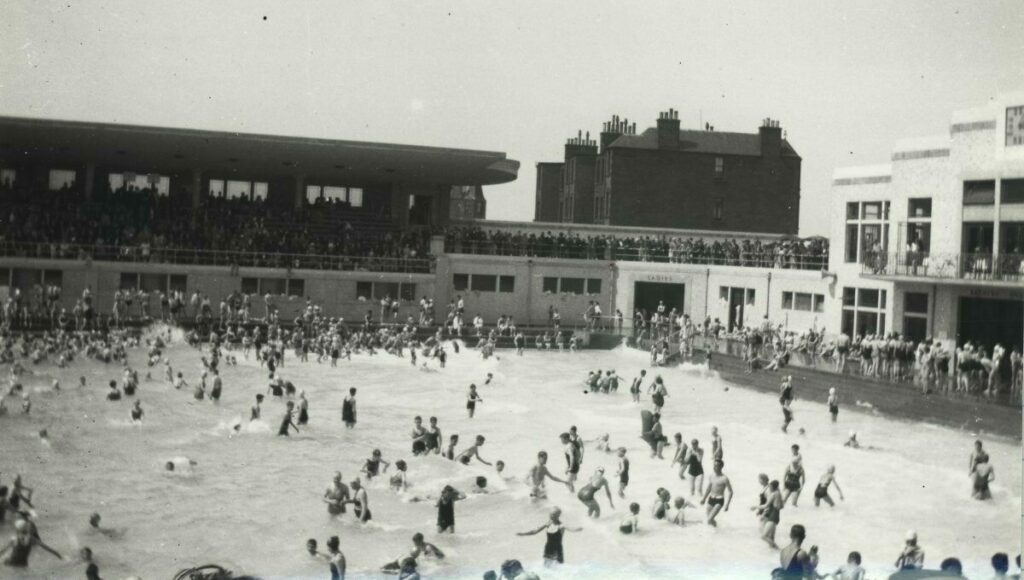Although Scottish summers might not always be the most inviting, Scotland has a variety of splashy pools, pavilions and piers on offer for a memorable summer holiday.
In the late Victorian and Edwardian era, new indoor swimming pools popped up across many towns and cities. And after the First World War, lidos, or outdoor pools, became a lot more popular. Scottish coastal towns and seaside resorts then ramped up their leisure facilities to attract domestic holidaymakers.
The 30s were the golden age of outdoor swimming pools in Scotland. And many of them demonstrate design features characteristic of the new Art Deco style. Today, you can still see many examples that boast the fascinating design style that took the world by storm.
If you’re looking for a deep dive into the history of Art Deco in Scotland, check out Art Deco Scotland: Design and Architecture in the Jazz Age by Bruce Peter!
But for now, grab your towel and a scoop or two of your favourite ice cream and dip your toes into our archives for Scotland’s hot Art Deco pools summer.
Portobello Swimming Pool (with artificial waves!)
The open-air swimming pool in Portobello, the lido, opened on 30 May 1936 under great fanfare. Probably unsurprising, the weather was pretty poor that day, yet 10,000 people came to watch the spectacle.
It was designed to Olympic specifications by William Allan Macartney, the city engineer, with assistance from Ion Warner of Edinburgh City Engineer’s department. The project had cost £90,000 to build.
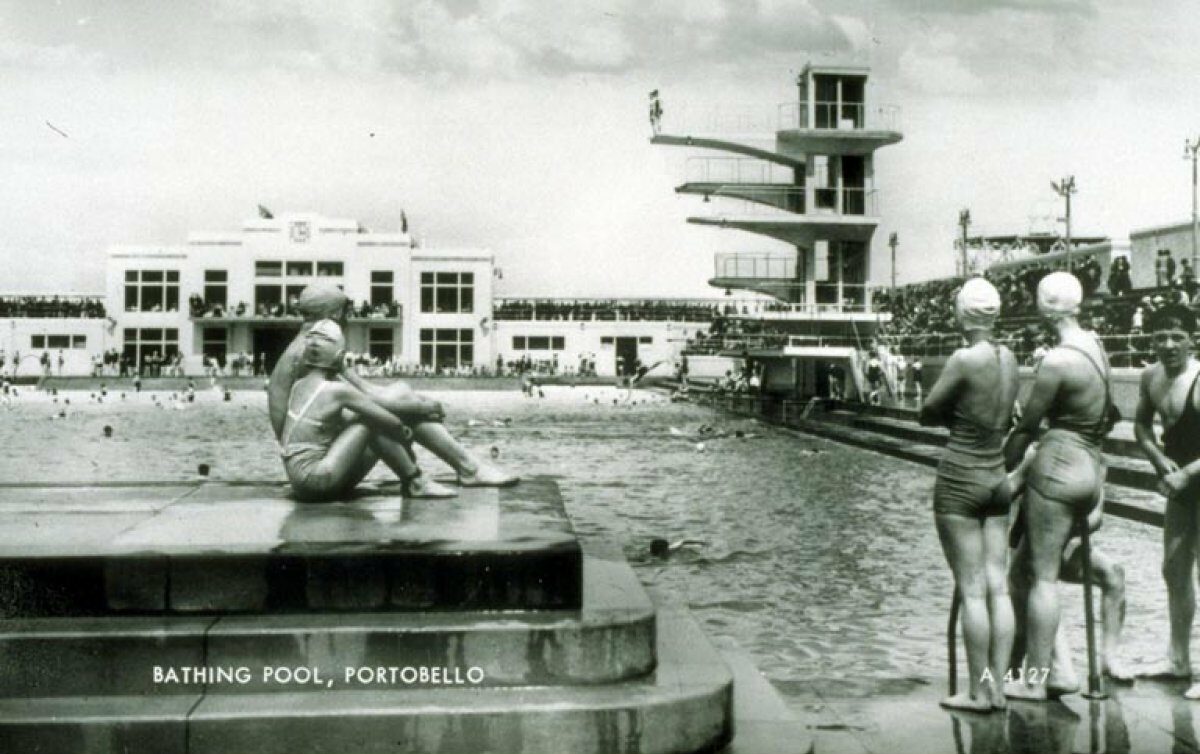
© Licensed by St Andrews University Library (project 229) (Records of the Scottish Cultural Resources Access Network (SCRAN), Edinburgh, Scotland) Explore more images of Portobello Swimming Pool on trove.scot
The pool was a state-of-the-art structure at the time with the most up-to-date facilities. Boasting 1,284 lockers and changing areas with terraced seating for 6,000 spectators, it was the largest bathing pool of its kind in Europe back then!
1,500,000 gallons of filtered seawater filled the basin of the pool. Thanks to warm discharge from the nearby power station, the pool had a 20°C temperature. Toasty by Scottish standards! But the most innovative feature was the wave machine, designed by Brown Brothers & Company of Edinburgh’s Rosebank Iron Works. It could produce waves up to three feet high and in three different directions!

© Copyright: Portobello History Society (Records of the Scottish Cultural Resources Access Network (SCRAN), Edinburgh, Scotland), Licensed by East Lothian Museums Service (project 110) (Records of the Scottish Cultural Resources Access Network (SCRAN), Edinburgh, Scotland)
The artificial waves were so dramatic that the machine only operated with a warning signal!
You may have spotted the iconic poster that advertised the pool (and its wave machine) before. It was designed by Tom Curr, one of Scotland’s most successful commercial artists and cartoonists of the era. He also designed the packaging for Scott’s Porage Oats!
Gourock Open Air Swimming Pool and Bathing Ponds
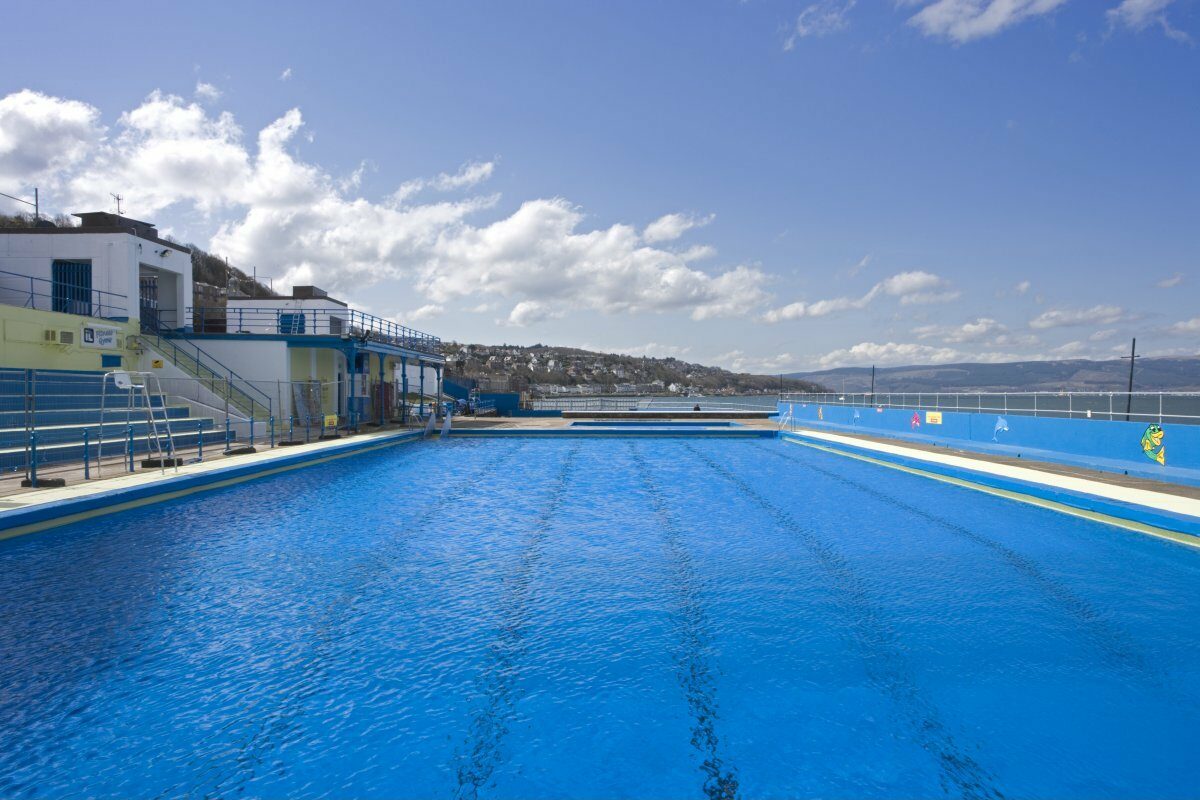
© Crown Copyright: HES. Find out more about Gourock Open Air Swimming Pool on trove.scot
The Gourock Outdoor Swimming Pool is the oldest heated pool in Scotland. It originally opened in 1909 as a tidal pool and was refurbished in 1935 with the beautiful Art Deco elements we still see today.
The 1930s alterations included a bigger space for spectators and swimmers. The entrance pavilions and a main pavilion with decorated wrought iron supports for the balcony and in 1969, a water heating system was installed. Further improvements were made in 2010.
If the photo of Gourock pool looks oddly familiar to you and you are partial to a bit of Britpop, you might have recognised the pool from the album cover of Blur’s The Ballad of Darren released in July 2023.
Bon Accord Baths, Aberdeen
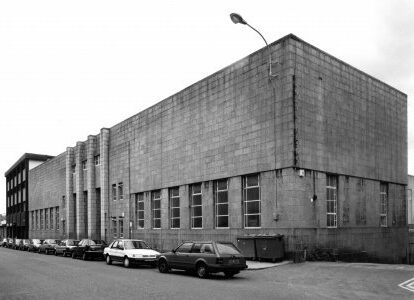
Find out more about the Bon Accord Baths in Aberdeen on trove.scot
Before the Bon Accord Baths were built, the local public had to head further out to the baths overlooking Aberdeen Beach. The Bon Accord Baths were a central public bath alternative.
Although the foundation stone was laid in 1936, the building was not completed until August 1940 and cost £37,000. Designed by Alexander McRobbie of the City Architects Department between 1936–40, the building is a striking example of Art Deco civic architecture, part of a broader movement that saw over 169 lidos constructed across Britain during the 1930s.
While many lidos were open-air, the Bon Accord Baths offered a rare indoor alternative. They combined the glamour of the era with year-round practicality. Its austere granite façade conceals a dramatic interior: curved sycamore-panelled walls, geometric glazing, and a vaulted concrete roof arching over a 36-metre pool.
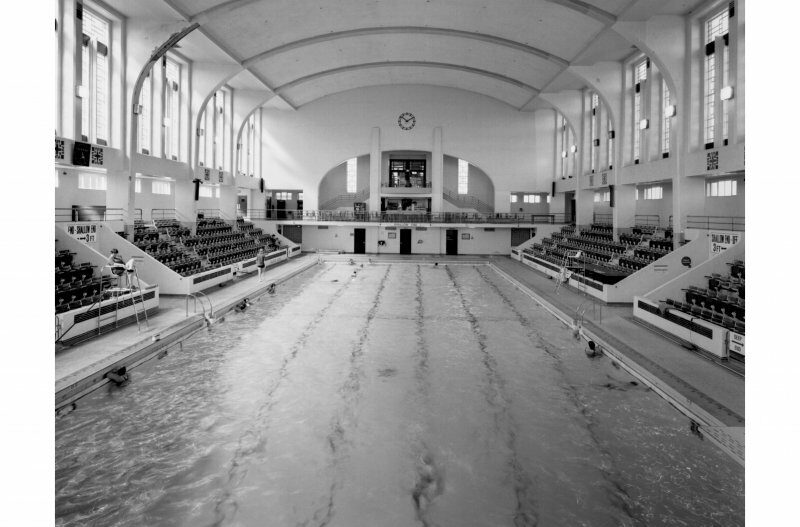
A five-level, 10-metre diving tower still stands at the deep end. The pool was one of the earliest in Scotland to feature underwater lighting.
Since 1991 the Bon Accord Baths have been category-B listed. They are one of the most significant surviving swimming pools of the interwar period in the UK.
Tarlair Swimming Pool, Macduff

© Licensed by St Andrews University Library (project 763) (Records of the Scottish Cultural Resources Access Network (SCRAN), Edinburgh, Scotland) Explore Tarlair Swimming Pool on trove.scot
Tarlair Swimming Pool opened in the summer of 1931. It’s one of only three surviving seaside outdoor swimming pool complexes in Scotland. But outdoor pools started popping up all over soon after across the country including in Prestwick (1931), Portobello (1936), Stonehaven (1934) and Arbroath (1935).
With its impressive architecture and its spectacular location on the rocky bay, the pool really stands out against the rugged backdrop of Tarlair.
The pool eventually closed in the 90s and remained an aesthetic feature in the landscape. But since then, the pool has had a decade of funding granted by the Scottish government and Aberdeenshire council to restore the category-A listed pools and the pavilion.
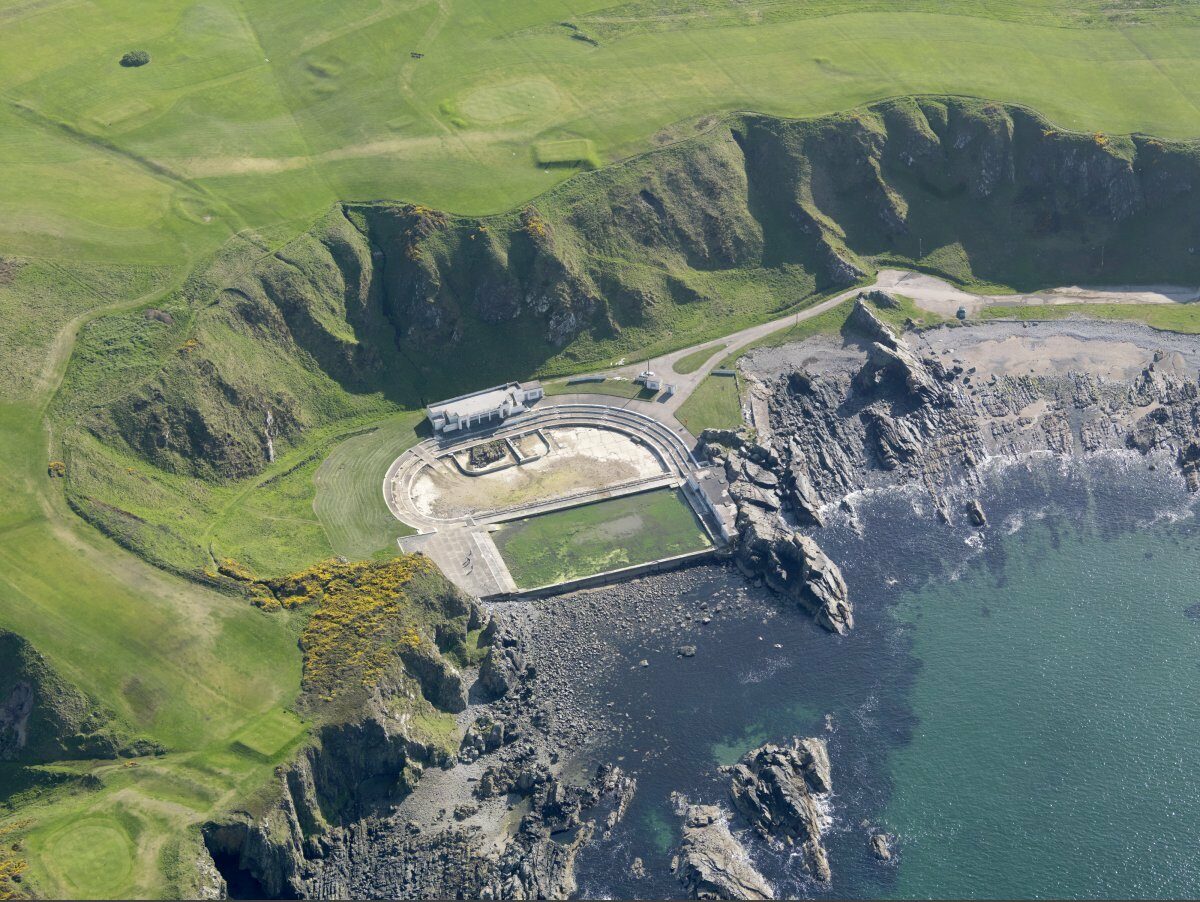
© Crown Copyright: HES
The pavilion at Tarlair has recently reopened. A local trust mange the pavilion and are dedicated to restoring both the boating and swimming pools to their former glory. Jethro Tull once performed there, and, rather fittingly, so did Wet Wet Wet!
Arbroath Bathing Pool
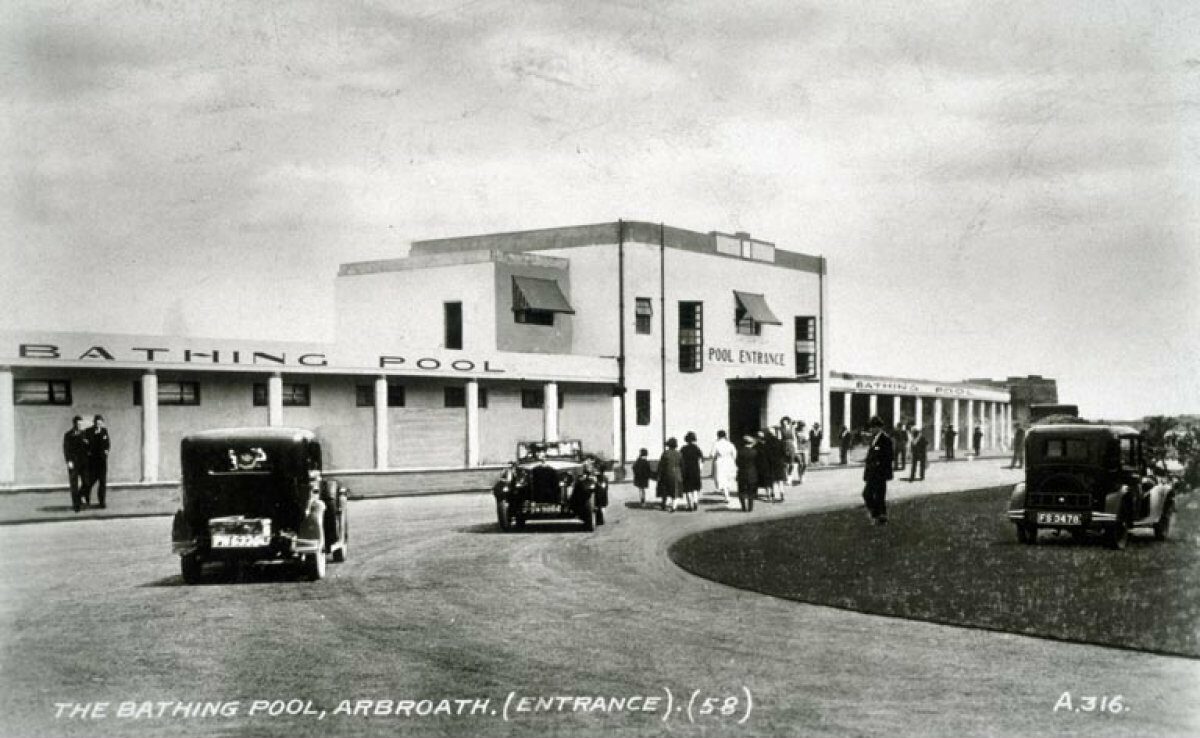
The Arbroath outdoor swimming pool was once the largest of its kind in Scotland. It opened in 1935.
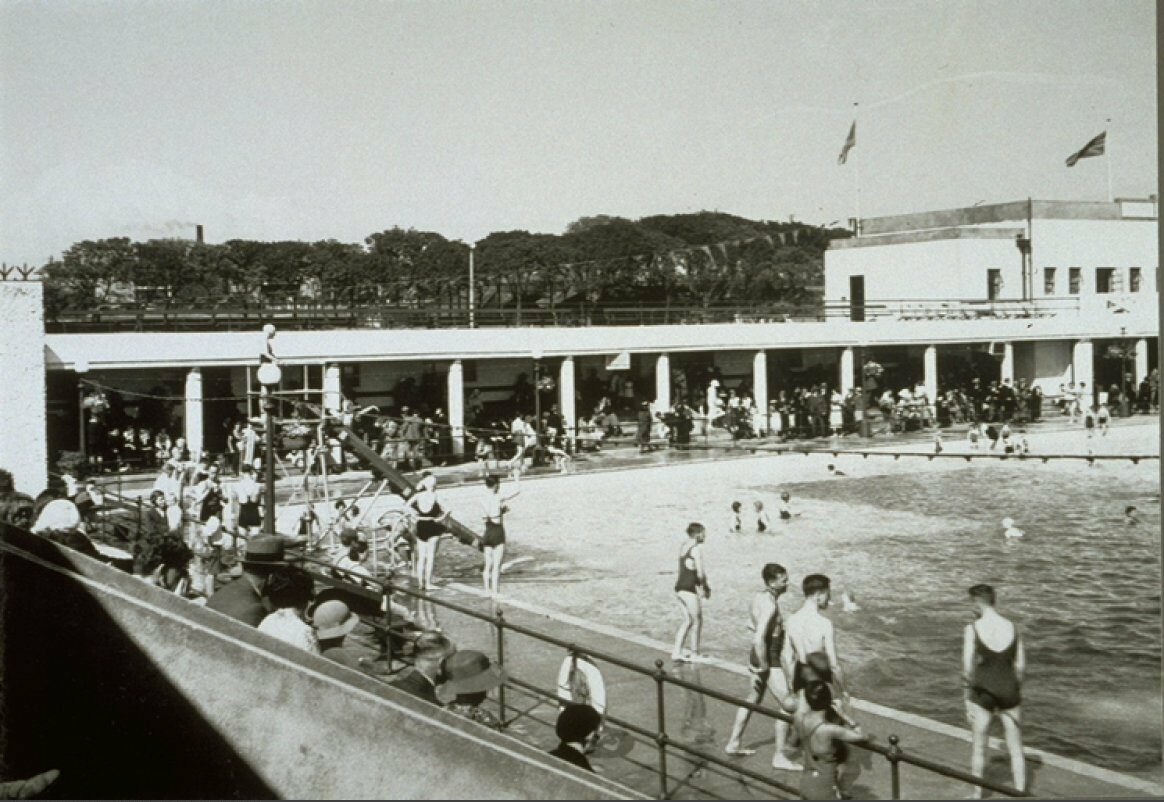
By the 1930s, most of Scotland’s seaside swimming pools installed chutes or slides (as here at Arbroath). Rafts and other amusements were also on offer. This reflected a change in use from swimming for exercise, which had been the Victorian and Edwardian ethos, to increasing numbers of recreational visitors looking to sunbathe and play.
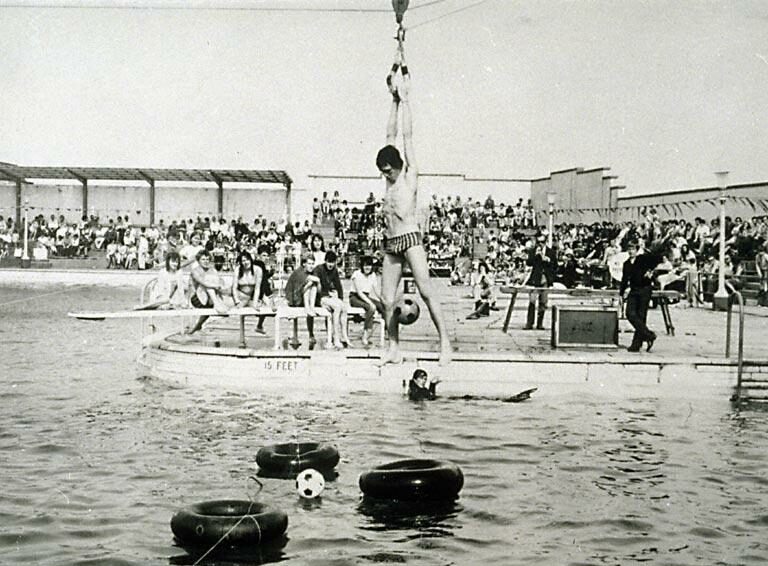
This image from 1971 was taken at a ‘It’s a Knockout’ competition in 1971 at Arbroath Pool. The rules are simple! The competitor needs to drop a ball in to a floating inner tube, all whilst hanging from an arial runway. The ‘It’s a Knockout’ competition was based on a popular television programme.
Going in for another dip?
If you’re looking for more cool content for the hot summer days, look no further. Explore the journey of Morag Edward and the crucial role swimming and the sea plays in her life. Or visit our online exhibition about Scotland’s coasts and waters.
Join Historic Places, Breathing Spaces
As part of your Historic Places, Breathing Spaces journey, we’d love to hear from you about how engaging with historic places has impacted your wellbeing
- Share: Upload a photo or video (up to 60 s) and a caption about your experience at a Scottish heritage site. Your contribution could feature in our online exhibition or on HES social channels.
- Explore: Discover guided walks, events, and Spotify playlists inspired by Scotland’s landscape and heritage.
- Be inspired: Read stories from real visitors, like Morag, who have found new meaning in our historic sites.
- Find your way: Access curated walking trails, staff favourite experiences, and practical wellbeing guides to help you start exploring.

